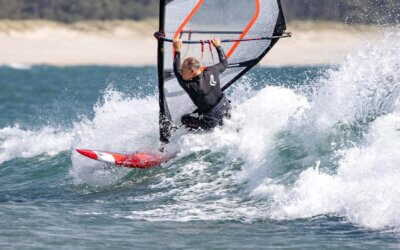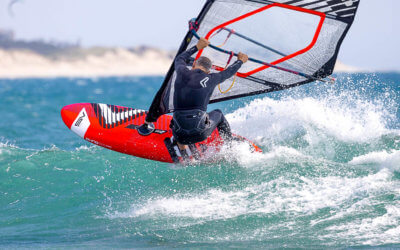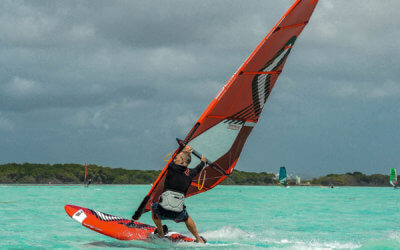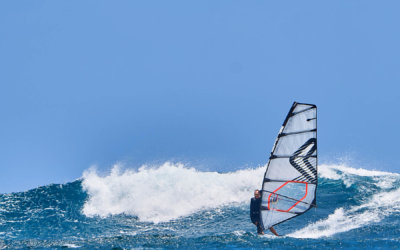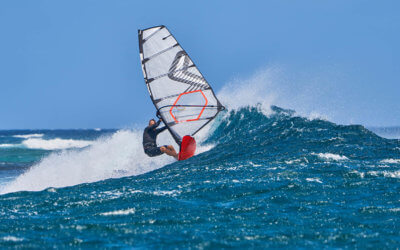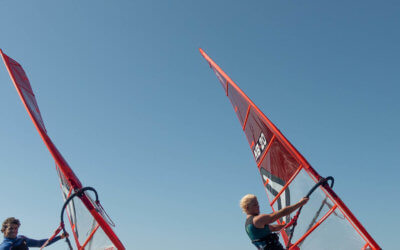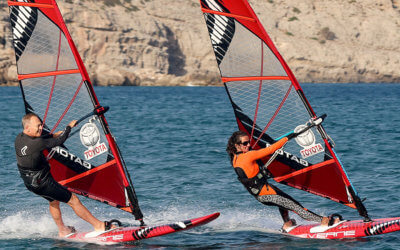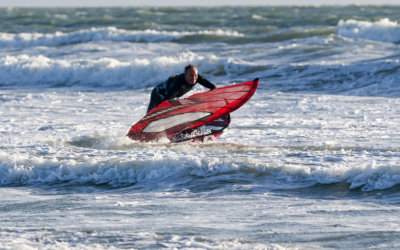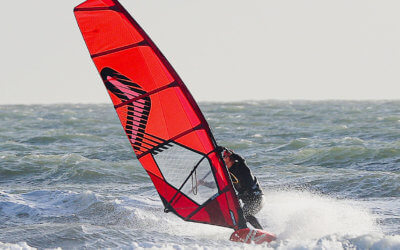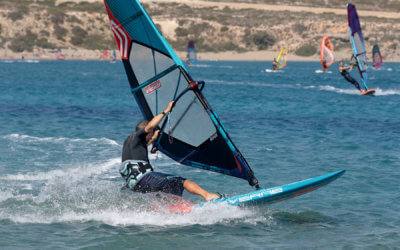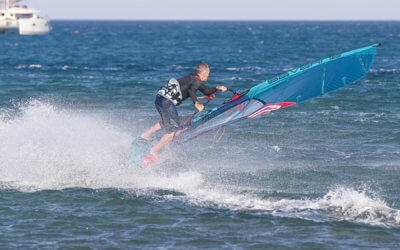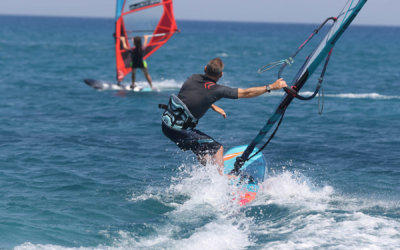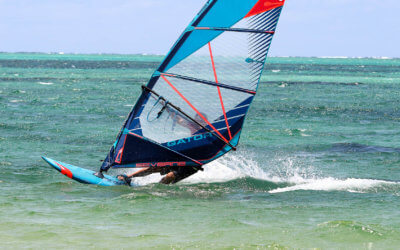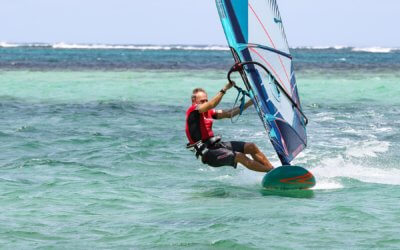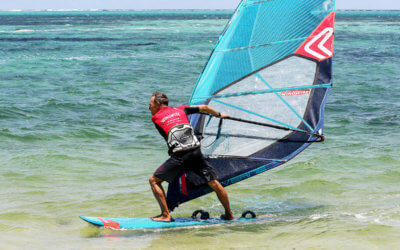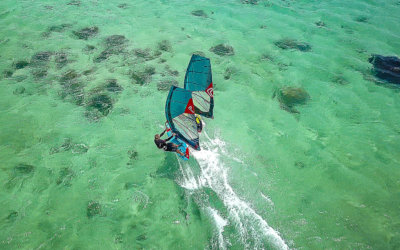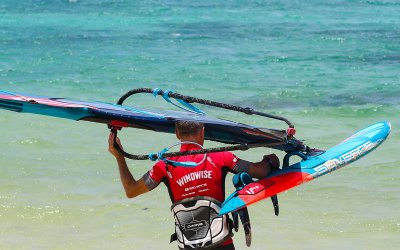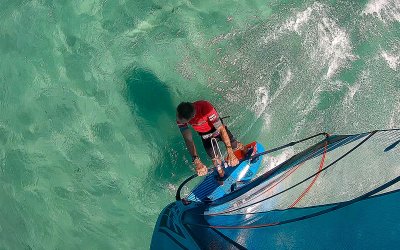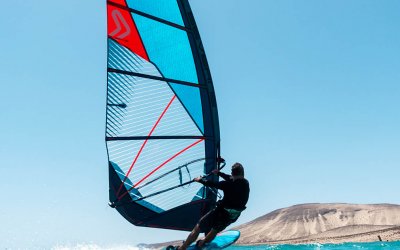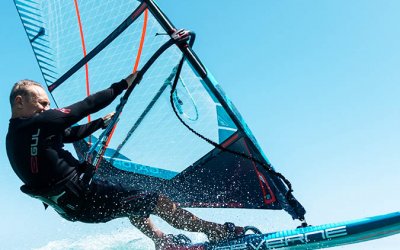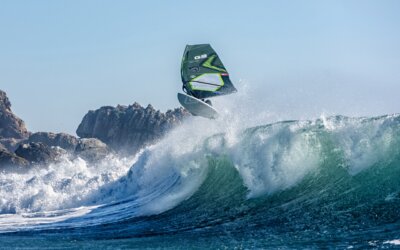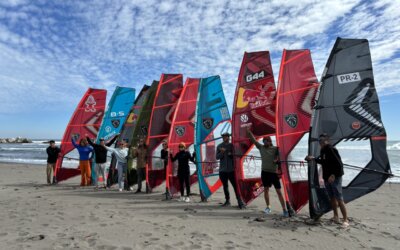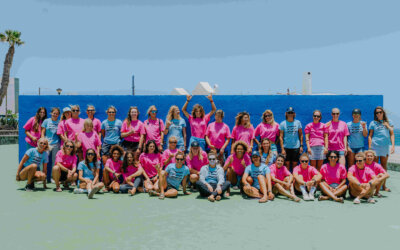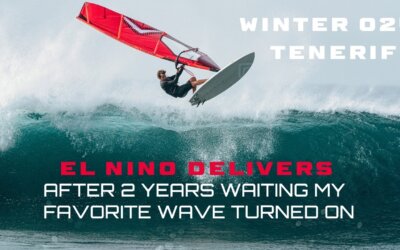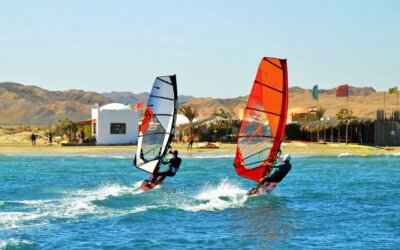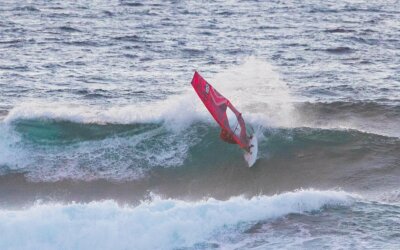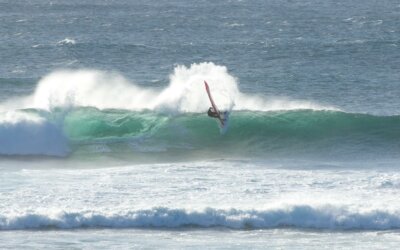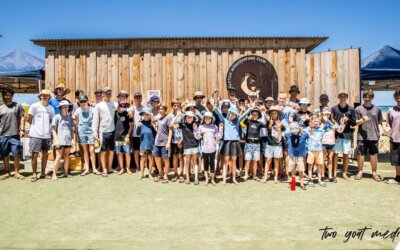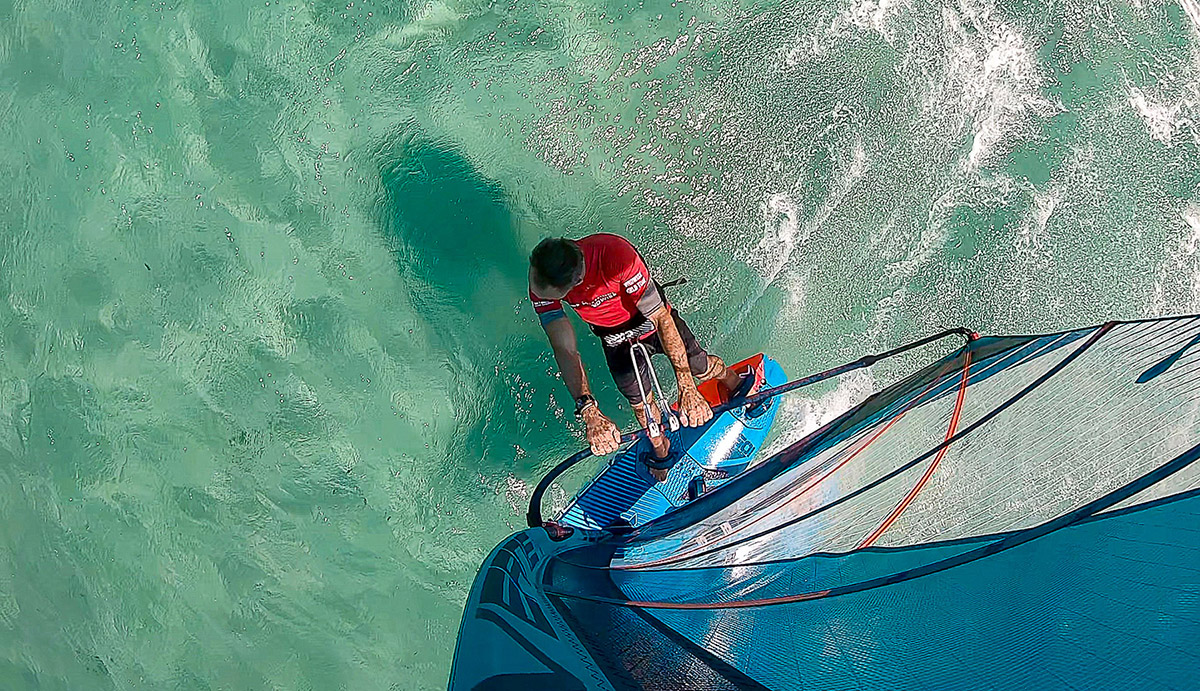
Get the settings right!
Ultimately we ‘all’ have the same aim – control, ease and an effective sailing position, all of which are massively influenced by harness line set up, be that for just blasting about, top speed slalom, wave or freestyle. If you suffer from slow early planing, poor blasting control, being over powered, (being over taken!!), arm fatigue, blisters or generally feel that the board and rig, “don’t quite seem right”, it could well be your harness lines and boom height. It’s important to stress that everyone will have a slightly different set up due to individual height, weight or kit choice, but here are some easily applicable ways for you to check on the water to make sure it is right for YOU!
Text: Simon Bornhoft/Windwise
Photos: Windwise & Kate Ocean
What you ‘feel’ on the water is key. Whilst there are a few beach guides, you can only really set your harness lines on the water, as variations of wind and sail setting on the same sail will effect where the lines need to go at any given time. Here’s a super easy, proven Windwise Touch Point trick that has helped hundreds and hundreds of people to master what can be a dark art. You just need to ask yourself one question….
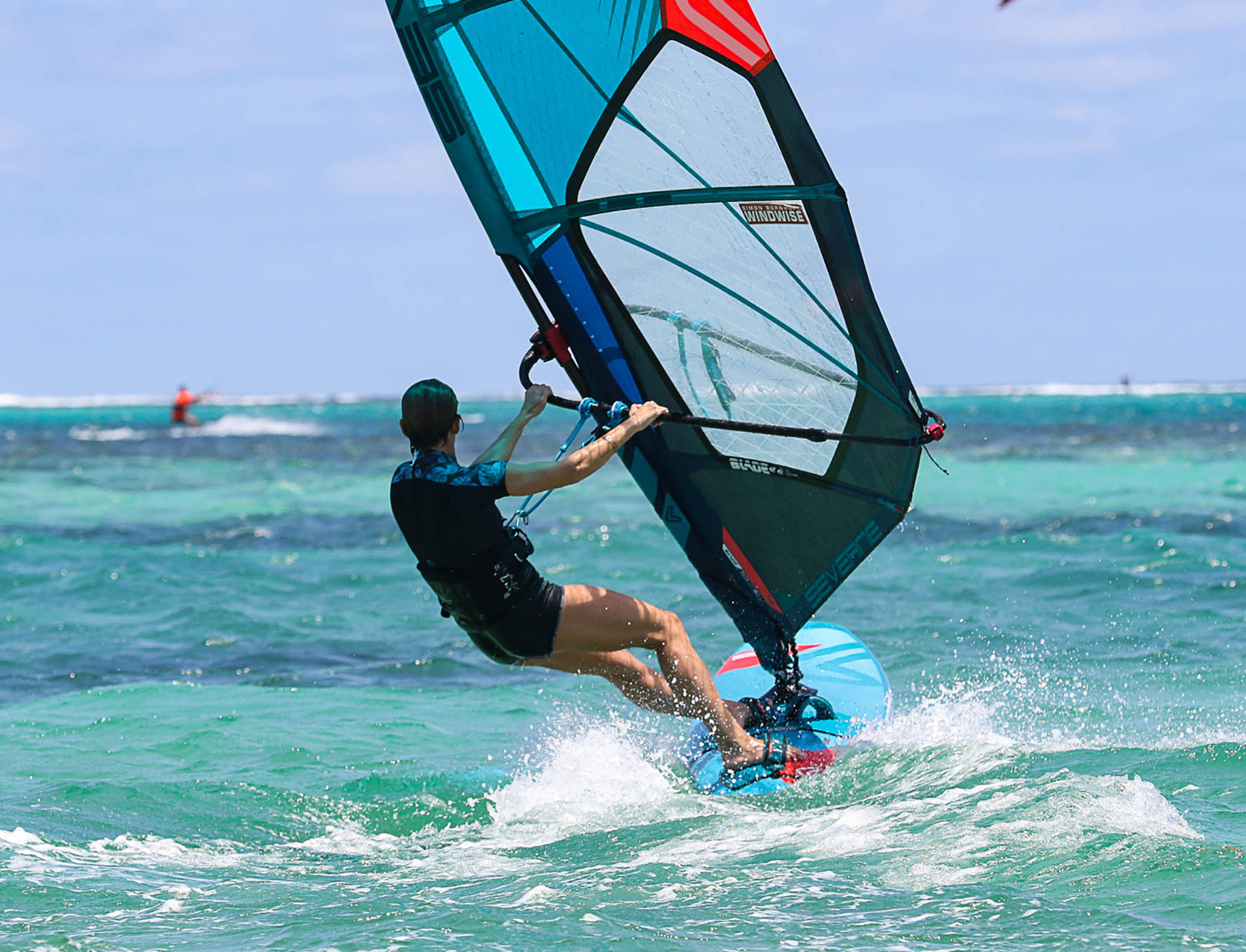
Q. Can you blast in the straps, sheet in and still lightly touch and rear harness line with your rear thumb?
Your hand doesn’t have to always be there, but simply trying this helps you to set your lines in the right place.
Next time you’re out, look to see if your rear hand is way past the rear line fixing, if it is, something is wrong! You’re either sailing with a gorilla wide grip or your harness lines are too far forward! So keep adjusting the lines until it is very easy to touch the rear harness line with your rear thumb. You don’t have to sail with the thumb touching the whole time, but the lines should be set so that the rear thumb is within easy touching distance. The front (mast) hand can float around just forward of the front harness line fixing. But next time you’re out try this simple trick as it teaches you to get the lines to do the sheeting in for you and enable you to have a finger light grip on ‘both hands’.
Simon Says
This is a very simple proven system that YOU can do to set everything up to get YOUR kit working for YOU. Run through this routine, but always fine-tune your lines on a regular basis to adjust to changes in kit and wind strength, but always ask yourself one simple question…. “Can you sail with your REAR thumb easily touching the rear harness line?”
To help you, run through this routine every time you go on the water.
Harness Line Lift & Set
Find a place out of the wind to lift the boom with a very light three-finger grip. Adjust to find the balance point so that the boom is horizontal when you lift it. For now, just fix your harness lines either side of that point and get out there – don’t faff!
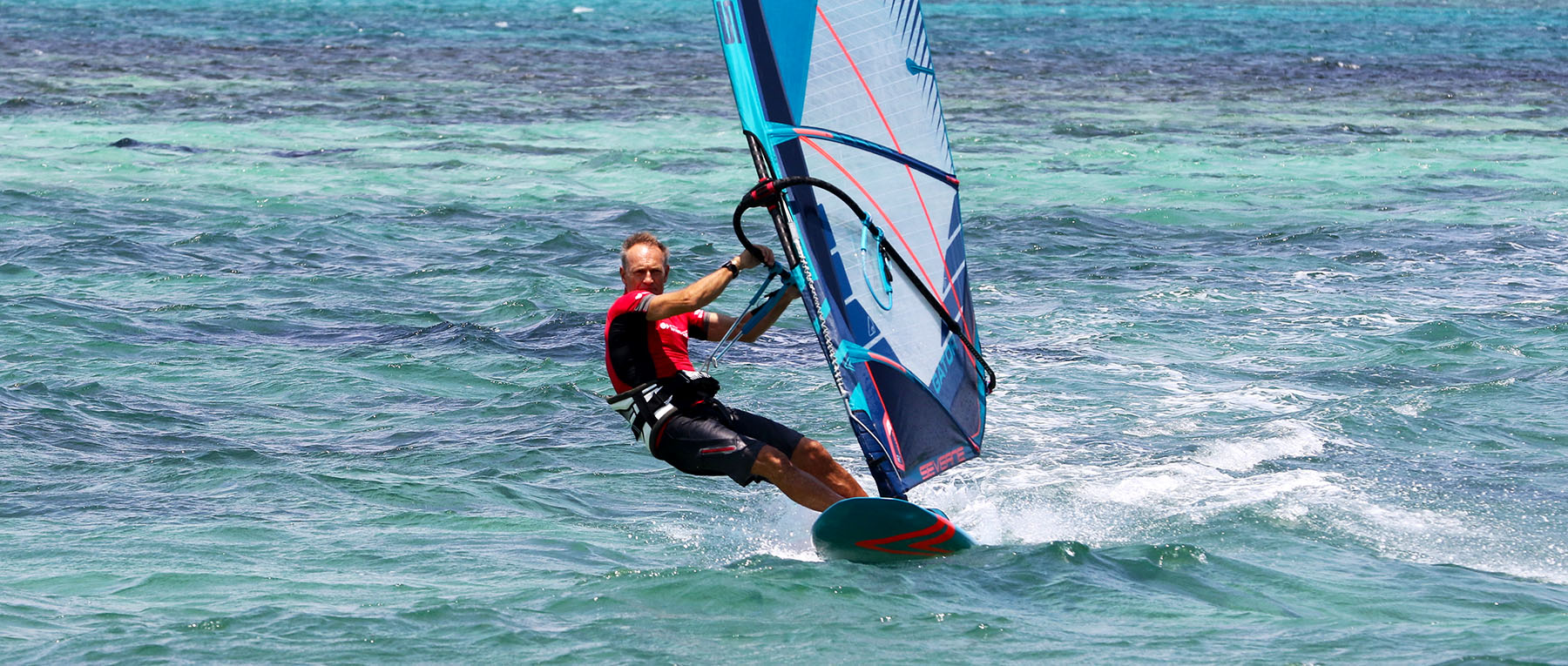
How To Set Your Lines On The Water For Any Board Or Sail!
When blasting along, narrow you hand spread and slide your rear-hand to TOUCH the REAR harness line with your REAR thumb. If the clew lifts, you feel unstable, the apex of the harness line is clearly angled towards the tail or you feel you have to move the backhand quickly back down the again (because you feel out of control), then your harness lines are most likely too far forward! So, move both lines towards to clew, (as a set – about 1cm at a time), until you can sail with your rear hand close enough to easily touch the rear harness line and have virtually no pressure on the front hand.
If the board heads upwind, there’s excessive pull on the front arm or the apex of the line is angled forwards, then move both lines forward until you feel balanced BUT can still easily touch the rear harness line. The front hand/arm should be able to just relax just forward of the front fixing. Tweaking and taking time to find this setting will ensure you’re sailing sufficiently sheeted in and not pulling on your arms.
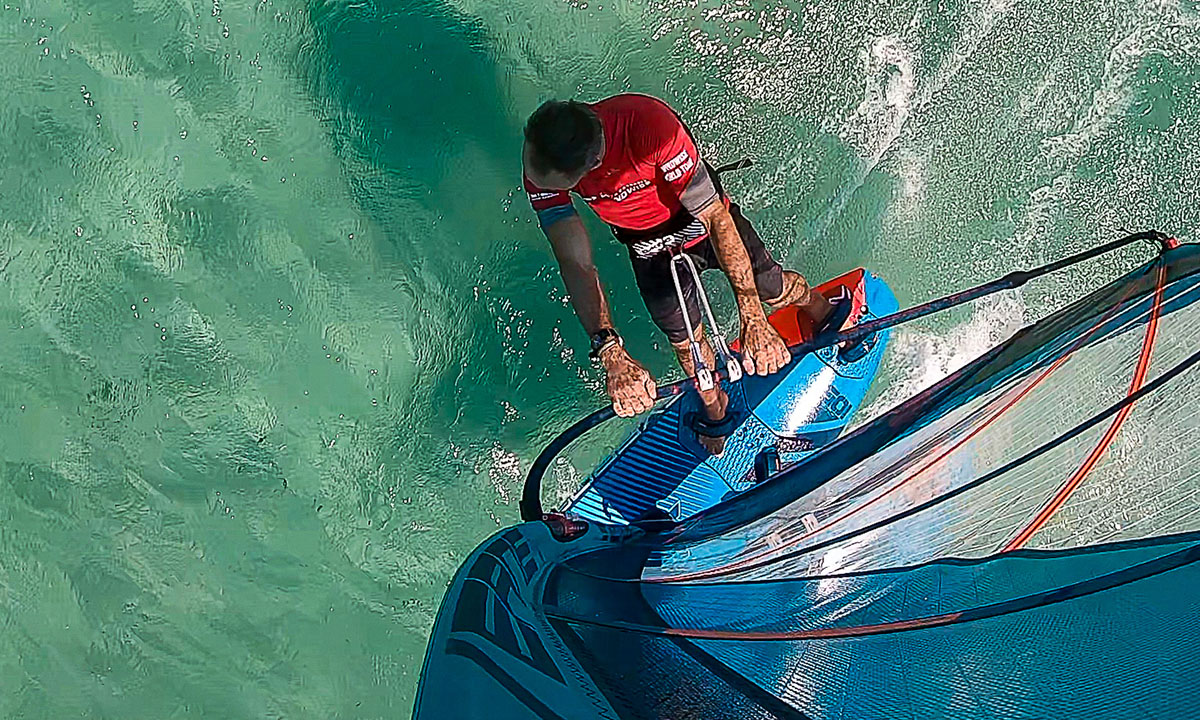
“We don’t sail the whole time with our rear hand ON the rear harness line, this is to get the set right so that the arms aren’t doing excessive work! But it should always be very easy to just touch the line with the rear thumb.”
Here are a few thoughts on when and how to fine tune to suit changing circumstances.
Common Indicators to move your lines FORWARD
- The front arm pulls too much!
- Lighter winds, less power or you’ve just flattened your sail.
- More inboard upright wave / freestyle stance.
- You lower your boom, move onto a smaller board or bring your mast base back.
Common Indicators to move your lines BACK
- Rear hand pulling too much and you’re constantly reaching down the boom!
- Stronger winds, faster speeds or increased sail power = Definitely lines back!
- More outboard locked down Freeride or slalom sailing.
- You raise your boom, move onto a larger/wider board or move your mast base forwards.
- You ‘bag out’ your sail to make it ‘fuller’, creating more clew hand pull = lines back.
THE GREAT DEBATE! Harness Line Length
- Velcro fixings should be approximately a hand width apart.
- Go narrower if you like a twitchier more sensitive ‘freestyle / wave’ feel.
- You can argue all day as to personal line length, but you want them set for the length of YOUR arm. Don’t copy a pro sailor, ‘coach’ or your mate telling you need 30-32-34 inch lines!
- Measure them for YOUR arm length!
HOW TO DO IT
Place the very tip of your elbow in the line and tension it…
Waist harness: The line should be approximately end of elbow to the ‘blister pads’ on your hand.
Seat harness: The line can be between ‘blister pad’ and ‘thumb pad’ part of palm.
*Personal taste or your twin might alter this slightly by 1-2cm*
*Generally wave & freestylers have them marginally longer than for freeride.*
*Make sure your harness is tight, otherwise it throws out everything!*
Is Your Boom High Enough?
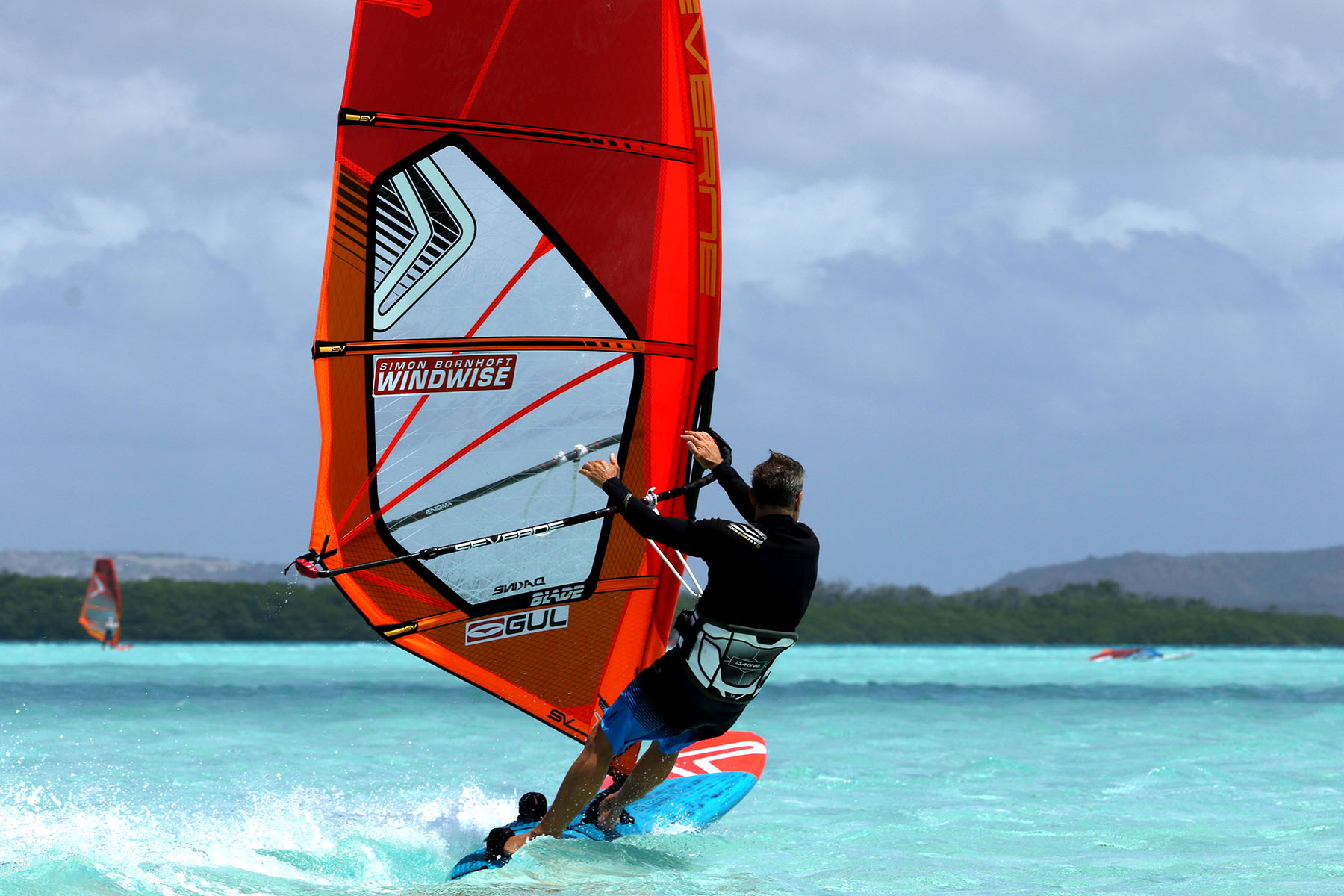
*Never adjust your boom out on the water, always do it in the shallows otherwise you might not be able to clamp it up properly
Essentially you want a down force to create “Mast Foot Pressure” and this comes from having the boom positioned so that the ‘correctly placed’ harness lines are pulling ‘in & down’ on the boom. You don’t want the lines to be too horizontal, so make sure your boom is high enough so that the pull from the harness lines are down!
RAISE your boom marginally… and shift the lines back slightly.
When sailing wider boards and you’re more outboard.
You’ve moved your footstraps from inboard to outboard settings.
You want to improve early planing.
The harness lines are not pulling down enough.
LOWER your boom marginally… and shift the lines forward slightly.
When sailing narrow boards.
Switching to inboard footstraps and more rearward mast base settings.
You’re over powered and want a bit more control.
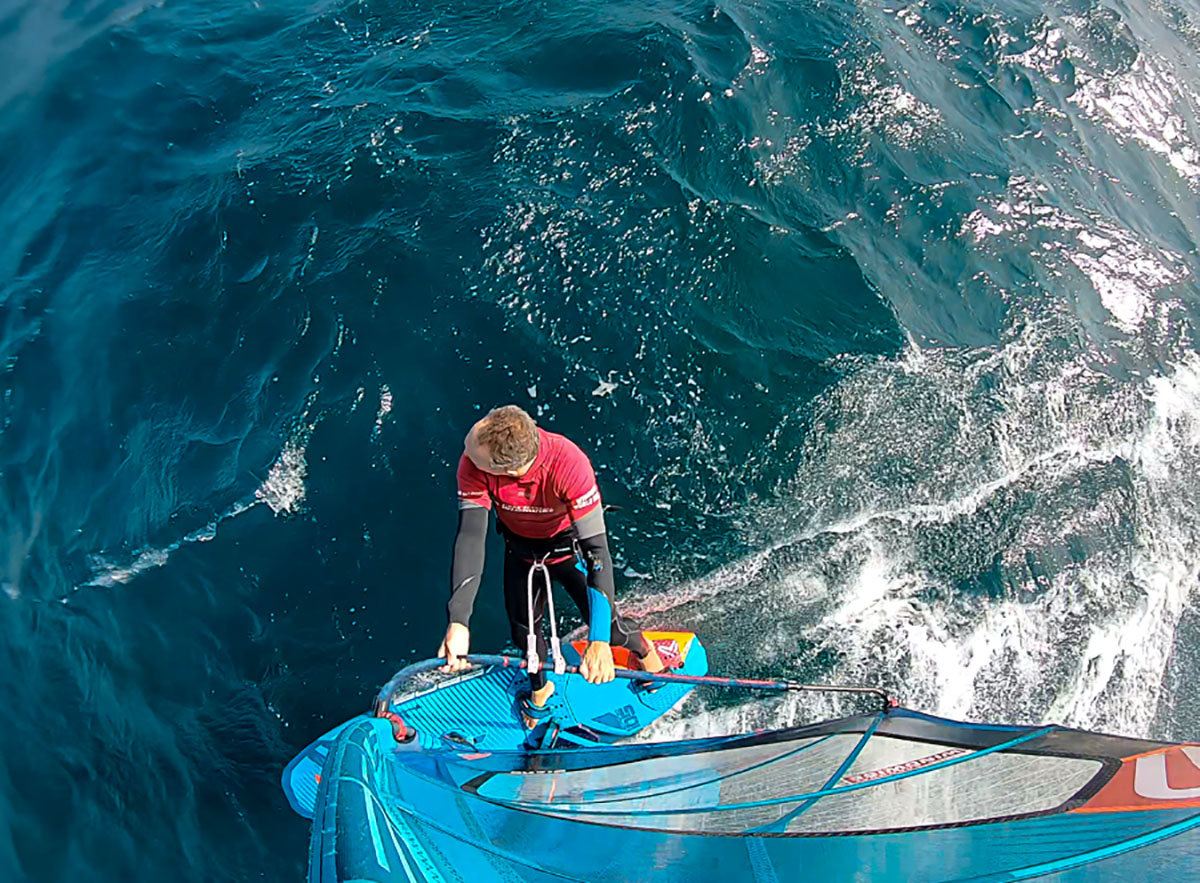
Whether you set the Dyno up with inboard or outboard straps, the action of sheeting the sail in comes from the lines being set in the right place. Basically when the body leans outboard, the sail sheets in through body position and not arm strength. I really hope this set up guide will help you to learn for yourself when things are right and enable you to get the most out of a Dyno, Fox, Psycho or Nano!
Get Some Windwise Coaching & Try Severne kit!
If you want to maximize your level, get the most out of your time on the water and try some Severne kit join us on our Windwise Technique Tour @ www.windwise.net.
Any Questions or Requests
If you want some personal advice on your how to improve your performance and get the most out of your Dyno or any other Severne kit, then ask Simon Bornhoft info@windwise.net.
More Dyno board guides
Dyno Diaries with Simon Bornhoft – One Board One Year – Multiple Progression
As the year closes in, Simon Bornhoft looks back on his Windwise experiences from 2022 picking out some key tipping points of progression and also demonstrates how the Dyno is one board that you can take everywhere with you.
DYNO BOARD SETUP WITH SIMON BORNHOFT PART 19 – HOW TO PREPARE FOR WAVES PART 4
Push it, drive it and accentuate! When conditions are tricky or you’re new to a wave environment, it’s important to stick to a plan and ‘try’ to massively exaggerate everything, no matter what you’re faced with. So, what better than to check out some real examples of Severne rider and Windwise coach Simon Bornhoft’s clients riding the Dyno and putting into practice some of the skills we’ve covered in our recent wave series.
DYNO BOARD SETUP WITH SIMON BORNHOFT PART 18 – HOW TO PREPARE FOR WAVES PART 3
Have you been inspired by the recent PWA Pozo Wave event? Well, here’s what YOU can do to get yourself into waves. Simon Bornhoft continues his Windwise series on how to fully develop your windsurfing skills, maximize your time on the Severne Dyno and, for this issue, continue your mission in the waves. So whether you’re new to freewave/wave windsurfing or polishing up your existing wave skills, this will give you a focus and purpose for your next sessions.
Dyno board setup with Simon Bornhoft part 17 – How to prepare for waves part 2
Severne Team Rider and International coach Simon Bornhoft continues his Windwise series on how best to develop your windsurfing skills. In this part, Simon goes deeper into how to prepare for your next wave session, even though you might not have access to waves.
DYNO BOARD SETUP WITH SIMON BORNHOFT PART 16 – HOW TO PREPARE FOR WAVES
Severne Team Rider and International coach Simon Bornhoft has helped thousands of recreational sailors to get into or improve their wave sailing skills on his Windwise courses. So if you’re on the cusp of venturing into any wave environment here are some skills that can be learnt on flat water and transferred into the rough stuff. Follow these wise words to increase your enjoyment and success rate in 2022!
Everything you need to know about your harness lines – hang In There Part 3 Wave & Freestyle
Windwise coach and Severne Team Rider, Simon Bornhoft, continues his ‘Hang In There’ harness line series looking at different disciplines and sailing styles. For this issue, we shift the focus and harness line positions for the Freewave, Wave & Freestyle playgrounds. So whether you’re a weekend wave warrior or looking to fine tune like a pro, wise up and read on.
Everything you need to know about your harness lines – Hang In There Part 2 Slalom & Freeride
Windwise coach and Severne Team Rider, Simon Bornhoft, continues his quest to help you get the most out of your precious time on the water and your kit. For this feature we continue our ‘Hang In There’ harness line series, looking at different disciplines and styles in windsurfing and draw on the speedy talents of Team Severne top riders.
DYNO BOARD SETUP WITH SIMON BORNHOFT PART 15 – Going shorter
Whether you’re moving into planing conditions for the first time or moving down in board volume, Simon Bornhoft offers some wise words on how to make smaller beautiful.
Dyno board setup with SImon Bornhoft part 14 – carving downwind 360
For this issue, we get into some serious carving with a downwind 360. Just trying them is a great way to improve your gybing ability, board handling and feel that Dyno carving sensation.
Dyno board setup with Simon Bornhoft part 13 – Gybe variations
Severne rider and coach Simon Bornhoft helps you expand your gybing range with a classic ‘Strap-to-Strap’ wave style gybe to make you and your Severne Dyno board feel like wave masters.
Dyno board setup with Simon Bornhoft Part 12 – a different approach
Simon Bornhoft looks at how to massively increase your gybing success rate when even just the thought of bearing away sends you and your kit into a total tail spin!
DYNO BOARD SETUP WITH SIMON BORNHOFT PART 11 – How To Boost Your Gybes
Simon Bornhoft explains on how to take your gybing to the next level and give your Dyno that extra zip, grip and a real surge of scintillating speed through the corners.
If you’ve struggled to control over powered gybes, challenging chop, excessive board speed or you’re just wanting a faster exit, being able to overseheet your rig and carve harder is a massive part of your progression. So we’re going to help take you and the Dyno into the faster, tighter turns with added confidence and greater exit speed.
DYNO BOARD SETUP WITH SIMON BORNHOFT PART 10 – Rig rotator
For this issue Simon Bornhoft continues the quest to give you the best possible gybes. So if you combine the Dyno’s super smooth easy turning qualities and the core Windwise skills that have enhanced thousands of gybers, you’re going to be cranking those corners!
DYNO BOARD SETUP WITH SIMON BORNHOFT PART 9 – Warrior Carving & Shifting & Switching
Severne Team rider and coach, Simon Bornhoft, continues his Windwise quest to give you dry fast gybes and will help you get the most out of your Dyno too!
DYNO BOARD SETUP WITH SIMON BORNHOFT PART 8 – Setting up for the gybe
Make Your Moves Gybe Wise Part 1: It’s All In The Set UpSeverne Team rider and gybing coach, Simon Bornhoft continues his quest to improve your windsurfing. For this issue, we cut through all the beach banter with a key Windwise Skills Training Exercise to enhance...
Dyno board setup with Simon Bornhoft part 7 – Windwise Warrior Tack
Tacking Victory Are you struggling to tack lower volume boards? Do you want to stay dry on that Dyno? Simon Bornhoft explains how to break the curse of failing to tack in strong winds on smaller boards.Our Windwise ‘Warrior Tack’ has been proven to solve the ‘How do I...
DYNO BOARD SETUP WITH SIMON BORNHOFT PART 5 – Brilliant Blasting Control
Stay in Control! Welcome back to our quest to make you a better sailor and help you get more out of your Severne kit. After getting you going in our Severne Windwise Early Planing feature, Simon Bornhoft is back to help you gain, keep and not lose control! Photos:...
DYNO BOARD SETUP WITH SIMON BORNHOFT Part 4 – Super Early Planing For ALL LEVELS
How to get the most out of the Dyno and get planing really quickly! Over the last few Windwise features we’ve covered setting up your footstraps and fins to best suit your style, location and specific conditions. So now it’s time to get fired up and enjoy the smooth,...
DYNO BOARD SETUP WITH SIMON BORNHOFT PART 3 – Mast Base Positioning & Fin Set Up
How To Fine Tune Your Sailing And Your Dyno! Okay, so we’ve gone through the footstrap set up, positioning and fit so you’re comfortable for all conditions and any style of windsurfing. We’ll now focus on your mast base positioning and fin set up choice to enable you...
Dyno board setup with Simon Bornhoft part 2 – Moving The Straps & Getting The Fit Right
GETTING THAT RIGHT FIT Okay, so moving on from our first Dyno Set Up feature, we’re now going to assist you in how to fine-tune the position and fit of your foot straps. This will help you to get the most out of the ‘inboard single strap’ or ‘outboard double back...
Dyno board setup with Simon Bornhoft part 1 – Freeride Outboard vs Freewave footstraps
FOOTSTRAP SET UP Being comfortable on the board has a lot to do with footstrap set up, here’s how to get them right for you and where you sail. Freeride Outboard Set Up If you’re looking for maximum control at speed, busting through challenging chop or holding down a...
Dyno setup with Simon Bornhoft
INTRO Okay, so you want to know more about the Dyno and how to get the most out of your board. We took the time to catch up with Severne Team Rider and international coach, Simon Bornhoft. His coaching system has developed the level of thousands of windsurfers on his...
More Severne news
Lina Erpenstein wins her first-ever World Cup in Chile
Severne rider rose to the top of the podium in her first-ever World Cup Victory in Chile. The women’s final consisted of no less than three Severne riders; Sol Degrieck who finished second and Pauline Katz who finished fourth.
THE ACTION IS HEATING UP IN CHILE
One of the biggest windsurf wave events in South American history kicked off on April 1st, and will run through to April 12th. The time has come for the PWA-IWT Chile World Cup, and based on the action we saw last year, we can expect to see high-quality windsurfing.
DON’T MISS THIS MASTERCLASS BY DIETER VAN DER EYKEN
After a successful first edition, Dieter van der Eyken, Rene Egli Fuerteventura, and INNSiDE by Melia, are announcing the second edition of the “Windsurfing Masterclass Fuerteventura”.
GIRLS ON TOUR
On Monday, July 10th, 2023, the second edition of ¨Girls on Tour¨ took place in Pozo Izquierdo, Gran Canaria. This esteemed event was a coaching program exclusively organized by the PWA for women, aimed at fostering their skill development.
SPECIAL WINDSURFING DAYS – EL NINO TURNS ON
Tenerife offered several closely spaced wave sailing sessions around the Christmas period in the winter months with some exceptional conditions with the arrival of the first winter swells.
A particular spot, that did not deliver a single day the previous winter, now had Severne rider Dieter Van Der Eyken as excited as a kid on Christmas day.
TOMMY FRIEDL PROCENTER
Experience laid back windsurfing in the red sea Welcome to the Tommy Friedl ProCenter, your destination for windsurfing adventures nestled in Marsa Alam, El Naaba Bay, along the stunning Red Sea in Egypt. At the heart of the action, the centre operates from the...
2024 Margaret River Wave Classic
The 2024 Margaret River Wave Classic was yet another epic event filled with non stop action from the very beginning until the end. Jaeger Stone took the mens open title and Jane Seman won the womens division.
MARGARET RIVER WAVE CLASSIC 2024
The 2024 Margaret River Wave Classic in Western Australia will happen this year from February 1st – 4th
Severne is proud to support this year’s event, and to see World class wave competition return to “margs” yet again.
West Oz Groms Dominate Oceania Youth Wave Classic
The 2024 Jaffle Shack Oceania Youth Wave Titles just concluded after four days of intense competition and coaching with the likes of Jaeger Stone.
It was undoubtedly one main events of the year for the youths in Australia. The Severne grom team showcased some serious skills and secured top positions in all U18 and U21 divisions.


